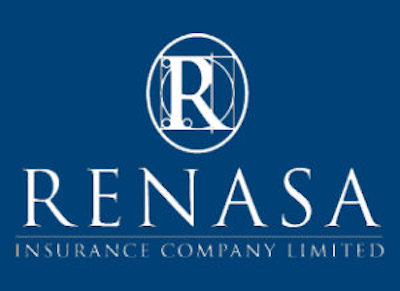
By: Cornel Schoeman, Chief Operating Officer of GENRIC Insurance Company Limited

Consumers demand more monetised value and digital convenience. Until recently, traditional insurance models have remained remarkably resilient in the onslaught of digital transformation and tech innovation that has disrupted entire industry sectors and upended competitive landscapes. Enter COVID-19 and a worldwide synchronous pandemic lockdown and all that has changed. Rapidly, spasmodically and painfully for many insurers and brokers.
The insurance industry has been catapulted into a world where customers have radically altered with higher expectations of their service providers. The sector is feeling the digital effect in a big dose of medicine that will reform, reshape and elevate some to new levels of relevance, and totally collapse others that are unable to transform their value proposition beyond risk and protection alone.
Today’s insurance customers expect much more than just affordable insurance premiums and efficient claims handling. Knowledge-rich and time starved, they want solutions that provide simplicity, quick online access to information especially policy details and claims matters, seamless engagements with their brokers and insurers, and added-value, bundled services that help them manage their risk better and deliver monetised value to their lives. They are looking for far more bang for their insurance premium buck!
The winners of this race will be the insurers that can create solutions that can combine insurance, protection and added-value services from non-insurers that put the customer front and centre. This means that insurers will need to escape the shackles of their outdated and inherited legacy platforms, and find ways to rapidly deploy new and innovative products by working with open application programming interfaces (APIs) that bring together insurers and underwriters, insurtech providers, product providers, brokers and policyholders in one harmonised eco-system.
Greater peace of mind
Consider the integration of vehicle telematics and accident warnings which have been part and parcel of motor insurance for over a decade now. For consumers, the insurance telematics solution provides greater peace of mind around safety and mitigating vehicle crime, as well as a means to better control their insured perils and obtain individual premium ratings based on driving behaviour. Less claims inevitably mean more affordable insurance premiums and cost savings for policyholders. And at any time, they can check in on their vehicle, cargo or loved ones and make sure they are safe – it’s a major peace of mind factor in crime-ridden SA.
For insurers, telematics is a powerful way to mitigate crime and promote responsible driving behaviour and in turn, reduce underwriting losses. It’s a win-win all round. Insurance telematics has evolved over the decades from being a highly niche feature to a widely accepted and expected solution in today’s motor insurance landscape.
In much the same way, smart connectivity and the Internet of Things (IoT) are now doing for homeowners’ insurance what telematics did for motor insurance with GENRIC’s SafeHomes solution. SafeHomes is a case study in customer-centric innovation that puts the customer front and centre. By harnessing the IoT, utility, security and emergency management tools are interfaced to a self-service portal which is at the core of the SafeHomes promise. Insured customers get to enjoy the benefits of real risk mitigation and avoidance of loss and resultant damage, self-determination, and they experience real savings through smarter utility management such as electricity and water usage. All enabled via GENRIC’s insurance portal on any IoT device, in real time.
In a country where electricity costs have increased by 500% over the last ten years and continue to do so annually by a further 15%, reducing electricity costs is top of mind for all South Africans. The electric geyser is by far the most energy-hungry device in a household accounting for anywhere between 30-50% of total household electricity consumption. Burst geysers are also the bane of insurers, accounting for the lion’s share of homeowners insurance claims.
That’s where SafeHomes comes in. By installing a ‘Geasy’ smart device with every SafeHomes policy, the homeowner gets to curb electricity usage by allowing them to optimally schedule and remotely switch their geyser on/off via a web app, saving up to 30% of an average household electricity bill. On a monthly electricity bill of R3000, that’s an estimated saving of R900 – which often amortises the cost of the homeowners insurance premium.
The advance warning of a burst geyser is another time, money and hassle saver. With a Geasy installed, there’s no nasty wake-up calls with water gushing through the ceiling at 3am on a frosty July morning for policyholders. And no more avoidable losses for insurers. The Geasy’s drip tray sensor is designed to detect water in the geyser’s drip tray and generates early warning notifications via SMS or e-mail – allowing the problem to be addressed early and the resultant damage from a geyser failure to be avoided.
The SafeHomes technology also interfaces with existing water meters and can detect high water flow rates or events that otherwise could easily go undetected, such as pipe bursts, underground leaks, taps left running and so on. Should the system detect abnormal usage or high flow rates, an SMS or email alert is sent to call for early intervention to address the problem.
Safety and security is another significant concern for South Africans. The SafeHomes app provides anemergency panic button which will automatically dial up the closest, contracted security provider when activated, sending location details based on your phone’s position to the security provider for assistance. In addition, the call can be routed to receive emergency medical attention as part of the solution offering. Further enhancements are also underway to allow for CCTV integration and enhanced home security and emergency options.
Finally, the SafeHomes Property Valuation provides an immediate assessment of a policyholder’s property value using spatial and geo-technologies and mapping this back to deed’s office information regarding property values in the area. The technology is also used to provide property evaluations based on statistical-actuarial data and historical sales data to determine current values. SafeHomes customers receive a bi-annual property valuation report which they can use to ensure that their property is correctly insured and avoid the risks of under-insurance in the event of a catastrophic loss.
Until now, getting this kind of monetised added-value and digital nirvana from a homeowners insurance policy was unheard of. Typically, insureds pay premiums for months on end, with little return unless they need to claim. SafeHomes changes all of that by harnessing the power of technology to provide bundled insurance and risk mitigation services within a single digital insurance ecosystem, connecting a spread of different products and service providers to the policyholder and broker.
The insurers and brokers that thrive in our radically altered and digitised lifestyles will be those who put customer centricity, tech and resilience at the fore, evolving beyond insurance and risk protection, to deliver true lifestyle solutions that resonate with our discerning, digitally-savvy consumers.




